-
 Bitcoin
Bitcoin $120300
1.41% -
 Ethereum
Ethereum $4296
2.75% -
 XRP
XRP $3.220
1.46% -
 Tether USDt
Tether USDt $0.9997
-0.04% -
 BNB
BNB $801.6
0.14% -
 Solana
Solana $179.9
0.22% -
 USDC
USDC $0.9998
-0.01% -
 Dogecoin
Dogecoin $0.2302
-0.24% -
 TRON
TRON $0.3405
-0.39% -
 Cardano
Cardano $0.7965
0.53% -
 Hyperliquid
Hyperliquid $44.80
2.57% -
 Chainlink
Chainlink $21.95
2.94% -
 Stellar
Stellar $0.4438
1.68% -
 Sui
Sui $3.767
-1.42% -
 Bitcoin Cash
Bitcoin Cash $584.4
3.24% -
 Hedera
Hedera $0.2554
-0.59% -
 Ethena USDe
Ethena USDe $1.001
-0.02% -
 Avalanche
Avalanche $23.57
0.00% -
 Litecoin
Litecoin $126.6
4.64% -
 Toncoin
Toncoin $3.339
0.94% -
 UNUS SED LEO
UNUS SED LEO $9.001
-0.49% -
 Shiba Inu
Shiba Inu $0.00001320
-0.92% -
 Uniswap
Uniswap $10.84
3.36% -
 Polkadot
Polkadot $3.945
-1.39% -
 Cronos
Cronos $0.1663
4.77% -
 Ethena
Ethena $0.8136
8.48% -
 Dai
Dai $0.0000
0.00% -
 Bitget Token
Bitget Token $4.391
-0.51% -
 Monero
Monero $268.0
0.80% -
 Pepe
Pepe $0.00001169
-1.57%
USD and USDT: Do you really understand the difference?
USD, a government-backed fiat currency, differs significantly from USDT, a stablecoin pegged to the USD. Key distinctions include backing, regulation, accessibility, and volatility, impacting their use and risk profiles within the financial ecosystem.
Mar 12, 2025 at 10:45 pm
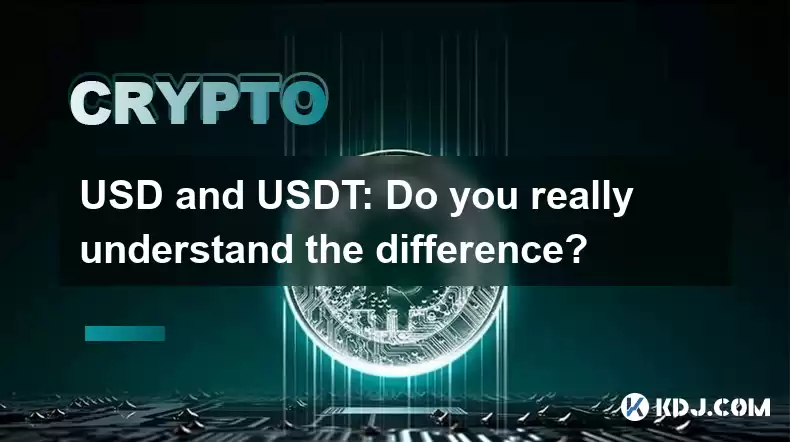
Key Points:
- USD represents the United States Dollar, a fiat currency backed by the U.S. government.
- USDT is a cryptocurrency, a stablecoin pegged to the USD, aiming to maintain a 1:1 ratio.
- Key differences lie in their backing, regulation, accessibility, and volatility.
- Understanding these differences is crucial for navigating the crypto market effectively.
- Both serve distinct purposes within the financial ecosystem, but their risks and benefits differ significantly.
USD and USDT: Do you really understand the difference?
The cryptocurrency market often presents complexities for newcomers. One frequent source of confusion is the distinction between USD, the United States Dollar, and USDT, Tether, a popular stablecoin. While both involve dollar values, their underlying mechanisms and implications are vastly different. This article aims to clarify these differences.
The USD, the official currency of the United States, is a fiat currency. This means its value is not intrinsically linked to a physical commodity like gold but is instead backed by the government's creditworthiness and the faith placed in its economy. Its value fluctuates relative to other fiat currencies based on various economic factors. Trading and using USD is governed by extensive banking regulations and laws.
USDT, on the other hand, is a cryptocurrency, specifically a stablecoin. Stablecoins aim to maintain a stable price, typically pegged to a reserve asset like the USD. Tether claims to hold USD reserves equal to the number of USDT in circulation, thus maintaining a 1:1 peg. However, the exact nature and verification of these reserves have been subjects of ongoing scrutiny and debate within the crypto community.
A critical difference lies in their backing. The USD is backed by the U.S. government, while USDT's backing is supposedly USD reserves held by Tether, a private company. This difference introduces significant regulatory and trust implications. The USD is subject to stringent government regulations, offering a higher degree of regulatory oversight and consumer protection. USDT, operating within the decentralized crypto space, is subject to less regulatory scrutiny, raising concerns about transparency and accountability.
Accessibility also differs. USD is readily accessible through traditional banking systems, allowing for easy transactions and widespread usage. USDT, being a cryptocurrency, requires access to cryptocurrency exchanges and wallets, limiting its accessibility for some users. Furthermore, using USDT often involves navigating the complexities of blockchain technology and associated fees.
Volatility represents another major difference. While the USD experiences fluctuations relative to other currencies, its volatility is generally considered lower than that of most cryptocurrencies. USDT, despite aiming for stability, has experienced periods of price deviation from its 1:1 peg, causing uncertainty and potential losses for investors. These deviations, though often minor, highlight the inherent risks associated with stablecoins.
The transaction processes are distinctly different. USD transactions are typically processed through established banking networks and payment processors, offering speed and reliability. USDT transactions occur on the blockchain, which can be slower and more expensive, depending on network congestion. The security and immutability of the blockchain are significant advantages, but the slower speeds can be inconvenient.
Both USD and USDT can be used for various purposes. USD serves as a primary medium of exchange and store of value within the traditional financial system. USDT finds its use within the cryptocurrency ecosystem, facilitating transactions between different cryptocurrencies and providing a relatively stable alternative to more volatile cryptocurrencies. However, their risks and benefits vary considerably.
Frequently Asked Questions:
Q: Is USDT safer than USD?
A: This is a complex question. USD is backed by a government and subject to robust regulations, offering a degree of protection. USDT, while aiming for stability, faces scrutiny regarding its reserves and is subject to market fluctuations and potential risks associated with the cryptocurrency market. Neither is inherently "safer"; the risk profile differs significantly.
Q: Can I easily convert USD to USDT and vice versa?
A: Yes, you can typically convert USD to USDT and vice versa through cryptocurrency exchanges. However, the process involves creating accounts, verifying your identity, and navigating exchange fees and potential risks associated with using exchanges.
Q: What are the risks associated with investing in USDT?
A: Risks include the possibility of de-pegging from the USD, exchange risks (e.g., exchange hacks or insolvency), and regulatory uncertainty surrounding stablecoins. It's crucial to understand these risks before investing.
Q: Is USDT regulated?
A: The regulatory landscape for stablecoins is evolving globally. Currently, USDT is subject to varying levels of regulatory scrutiny depending on the jurisdiction. The lack of consistent and comprehensive regulation presents a risk factor for investors.
Q: What are the advantages of using USDT over USD in the crypto market?
A: USDT offers a relatively stable alternative to highly volatile cryptocurrencies for trading and holding. It facilitates transactions within the crypto ecosystem, providing a bridge between fiat currencies and cryptocurrencies. However, these advantages must be weighed against the inherent risks.
Disclaimer:info@kdj.com
The information provided is not trading advice. kdj.com does not assume any responsibility for any investments made based on the information provided in this article. Cryptocurrencies are highly volatile and it is highly recommended that you invest with caution after thorough research!
If you believe that the content used on this website infringes your copyright, please contact us immediately (info@kdj.com) and we will delete it promptly.
- DYDX Price Stays Afloat: Navigating Neutral Momentum with Technical Indicators
- 2025-08-11 20:50:12
- Superman Takes Flight: A Deep Dive into the Comic Program and Coin Medals
- 2025-08-11 20:30:12
- JasmyCoin's Bullish Momentum: Riding the Daily Gain Wave
- 2025-08-11 21:10:12
- Shiba Inu's Comeback Trail and the Meme Coin Mania: Can $SHIB Deliver a 12,000x Return?
- 2025-08-11 18:30:11
- Proof of Trust, Transparency, and User Safety: Keeping Crypto Real
- 2025-08-11 18:50:12
- Pudgy Penguins, Bitcoin Penguins, and the $22M Meme Coin Mania: A New York Perspective
- 2025-08-11 17:10:11
Related knowledge

How to choose a reliable USDT exchange service provider? How to identify?
Jun 12,2025 at 03:15pm
Understanding the Role of USDT in Cryptocurrency TradingUSDT (Tether) is one of the most widely used stablecoins in the cryptocurrency market. It is d...
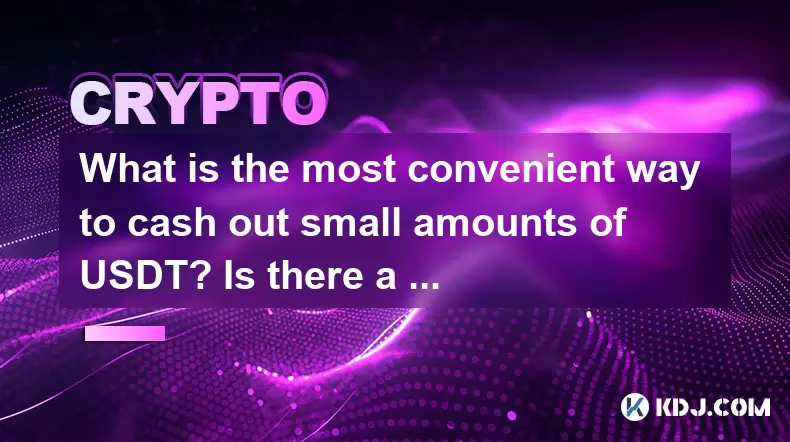
What is the most convenient way to cash out small amounts of USDT? Is there a shortcut?
Jun 11,2025 at 11:00pm
Understanding the Need to Cash Out Small USDT AmountsCashing out small amounts of USDT can be a challenge for many crypto users. Traditional methods o...
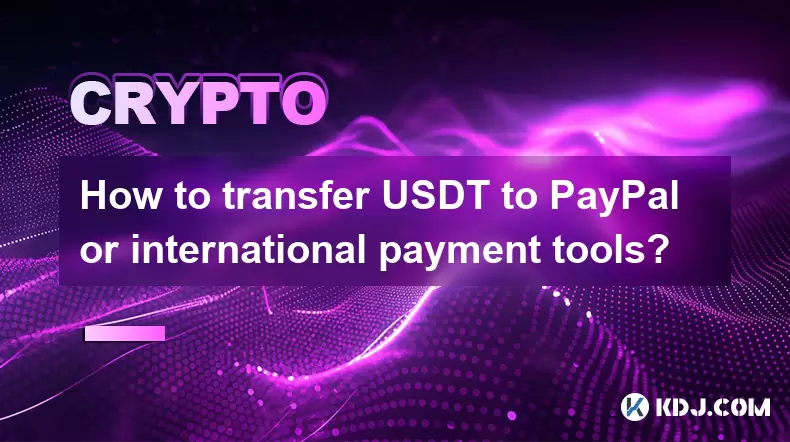
How to transfer USDT to PayPal or international payment tools?
Jun 15,2025 at 05:28am
Understanding the Basics of USDT and PayPal IntegrationUSDT (Tether) is a stablecoin pegged to the US dollar, offering blockchain-based value transfer...
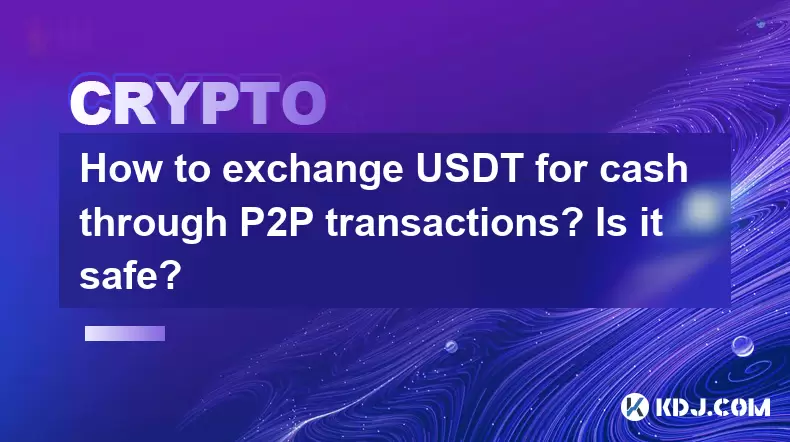
How to exchange USDT for cash through P2P transactions? Is it safe?
Jun 18,2025 at 07:56am
Understanding USDT and P2P TransactionsTether (USDT) is a stablecoin pegged to the value of the US dollar, making it a popular choice for users who wa...
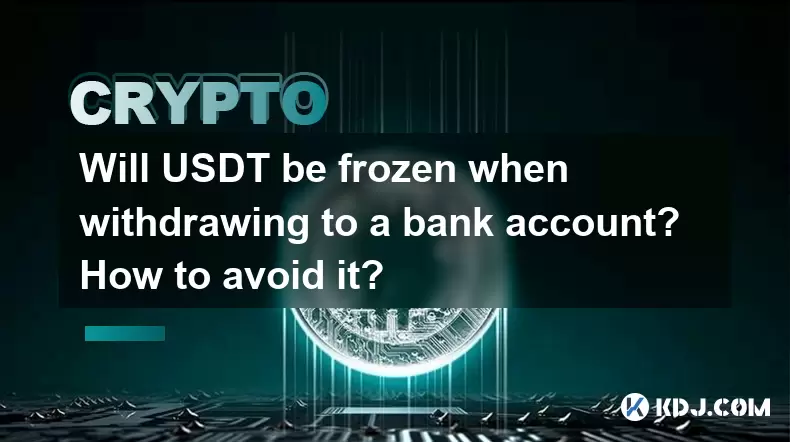
Will USDT be frozen when withdrawing to a bank account? How to avoid it?
Jun 15,2025 at 10:03am
Understanding USDT Withdrawals and Bank Account Freezing RisksWhen users decide to withdraw USDT (Tether) to a bank account, one of the most common co...
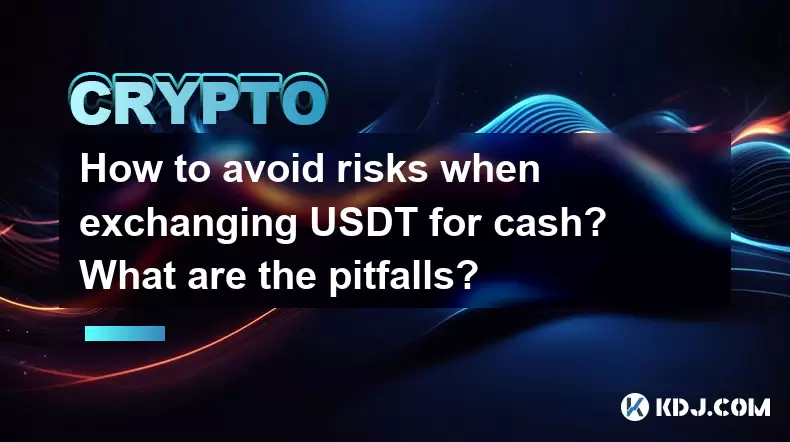
How to avoid risks when exchanging USDT for cash? What are the pitfalls?
Jun 11,2025 at 08:14pm
Understanding the Risks of Exchanging USDT for CashWhen exchanging USDT (Tether) for cash, users must be aware of the potential risks involved. As a s...

How to choose a reliable USDT exchange service provider? How to identify?
Jun 12,2025 at 03:15pm
Understanding the Role of USDT in Cryptocurrency TradingUSDT (Tether) is one of the most widely used stablecoins in the cryptocurrency market. It is d...

What is the most convenient way to cash out small amounts of USDT? Is there a shortcut?
Jun 11,2025 at 11:00pm
Understanding the Need to Cash Out Small USDT AmountsCashing out small amounts of USDT can be a challenge for many crypto users. Traditional methods o...

How to transfer USDT to PayPal or international payment tools?
Jun 15,2025 at 05:28am
Understanding the Basics of USDT and PayPal IntegrationUSDT (Tether) is a stablecoin pegged to the US dollar, offering blockchain-based value transfer...

How to exchange USDT for cash through P2P transactions? Is it safe?
Jun 18,2025 at 07:56am
Understanding USDT and P2P TransactionsTether (USDT) is a stablecoin pegged to the value of the US dollar, making it a popular choice for users who wa...

Will USDT be frozen when withdrawing to a bank account? How to avoid it?
Jun 15,2025 at 10:03am
Understanding USDT Withdrawals and Bank Account Freezing RisksWhen users decide to withdraw USDT (Tether) to a bank account, one of the most common co...

How to avoid risks when exchanging USDT for cash? What are the pitfalls?
Jun 11,2025 at 08:14pm
Understanding the Risks of Exchanging USDT for CashWhen exchanging USDT (Tether) for cash, users must be aware of the potential risks involved. As a s...
See all articles

























































































